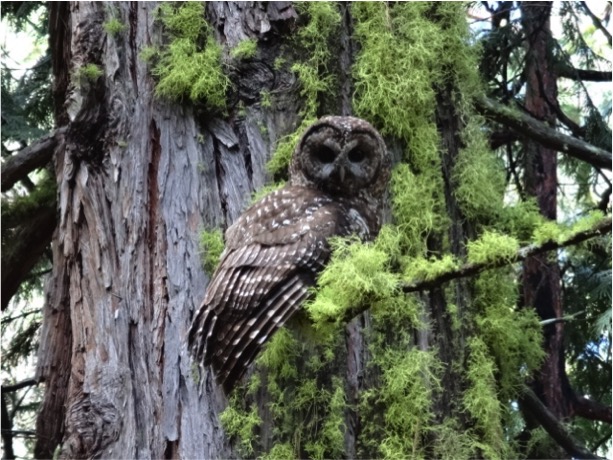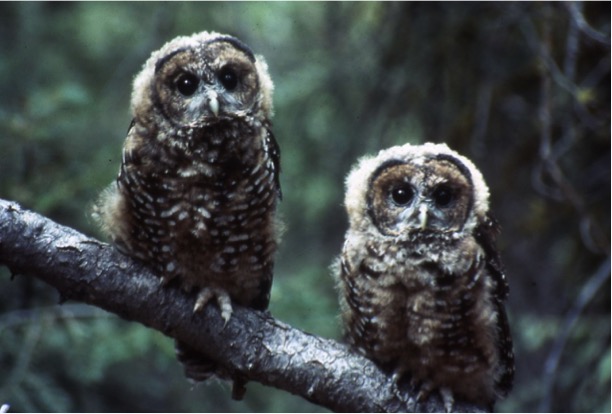When it comes to forest management debates, no bird has gotten more attention or been the source of more controversy than the spotted owl. The Northern spotted owl is found in Northern California’s coast range and north into Oregon and Washington, while the California spotted owl resides within the Sierra Nevada region and to a limited degree in coastal and Southern California forests.
Environmental groups in the 1990’s filed lawsuits in defense of the spotted owl, and the resulting changes in Forest Service management were significant. Clearcuts (that were a common practice on Forest Service lands in the Sierra Nevada) and the cutting of large, old trees were curtailed as science-based policies forced the USFS to shift to thinning logging and retention of big trees. CSERC was one of numerous groups 20 years ago that helped achieve those policy changes. Now, the release of a new CA spotted owl assessment may lead to new policy changes in the next year. CSERC aims to be part of those pivotal discussions.

Tom Harrington photo
On private timberlands, protections for the California spotted owl in the Sierra Nevada region are far weaker than public land requirements. Private land clearcuts of 20 acres or larger are still legal. Cutting of all big trees is allowed. And no science-based protocol-consistent surveys for the owls are required in order to determine the presence of spotted owls before logging is done. Despite two decades of efforts, CSERC and other activist groups have been unsuccessful in getting more effective owl protections for private lands.

Now Sierra Pacific Industries (SPI) is seeking approval from the U.S. Fish and Wildlife Service for a Habitat Conservation Plan that would allow “take” of Northern and California spotted owls on SPI lands as a result of logging operations. While it is negative for an agency to approve the incidental killing of owls (“take”), an approved plan by USFWS might require stronger protective measures than SPI currently implements. CSERC and other groups are submitting input to hopefully gain increased protection for the vulnerable and charismatic owls.

